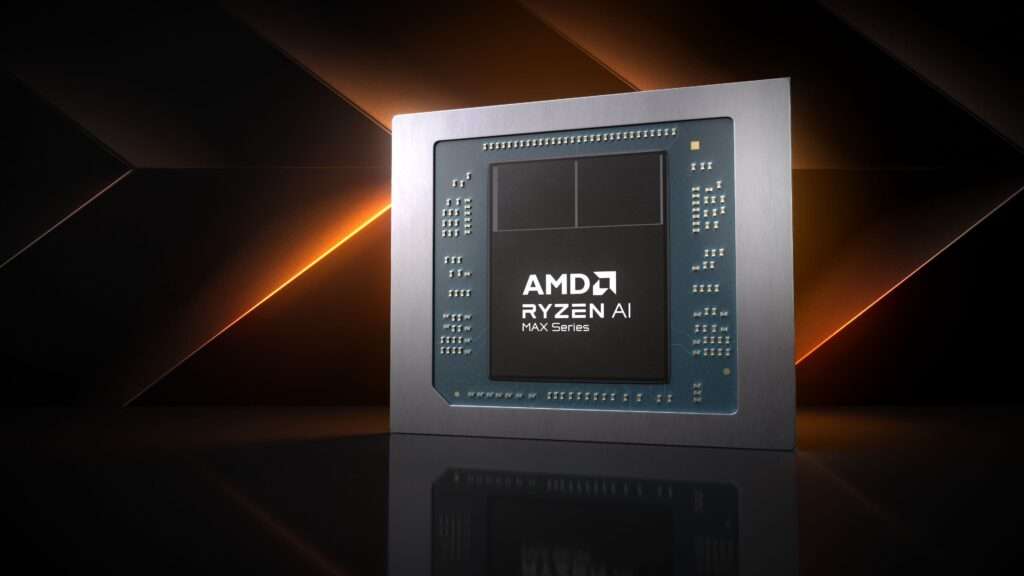The Berlin IFA 2025 served as a showcase for AMD to address a flood of questions about its current and future strategy. Although the company did not unveil new products, it sent clear messages regarding its plans with artificial intelligence, NPUs, GPUs, the future of FSR Redstone scaling, and, of course, the controversial chip rebranding issue.
Artificial Intelligence, “Underhyped” According to AMD
While the industry seems to talk about nothing else, AMD maintains that artificial intelligence is still in such an early stage that it is even “undervalued.” Jack Huynh, senior vice president and head of the Computing and Graphics division, stated that the next three to five years will be decisive: “We believe AI will be for this generation what the internet was decades ago.”
At Berlin, AMD emphasized the importance of local AI, executed on devices without relying on the cloud, as a key for security and privacy. An obvious nod to its strategy of boosting NPU presence in PCs and laptops.
The “Perfect PC” and the Role of NPUs
The company argued that there can’t be an AI PC without a solid base PC. Its goal: deliver the best possible combination of hardware and software for a “perfect PC” that serves both users and businesses.
In this ecosystem, NPUs (Neural Processing Units) will play an increasingly important role. AMD emphasized that these units will not replace CPUs or GPUs but will take on more tasks thanks to their higher energy efficiency. According to Huynh, the key lies in performance per watt rather than raw power.
AMD also took the opportunity to address the ongoing ARM vs. x86 debate, defending that the supposed inefficiency of x86 is a thing of the past: “Today, both Ryzen and Intel Core offer very long battery life in laptops, without sacrificing the full x86 ecosystem.”
GPUs: Strong Sales, but Debate Over Market Share Data
One of the most sensitive topics was GPU market share. A recent report by Jon Peddie Research placed AMD with just 6% of the discrete graphics market, compared to NVIDIA and its RTX series. The company avoided directly commenting on these figures and referred to Mercury Research’s data, which is traditionally more favorable.
What it did admit is that demand continues to exceed supply: “Radeon GPUs sell well in gaming and professional environments. We are working to increase capacity.”.
FSR Redstone Coming Soon
Another notable announcement was the confirmation that FSR Redstone, the evolution of its FidelityFX Super Resolution upscaling technology, will arrive this semester as scheduled. AMD is preparing a specific presentation to showcase the new features of this standard, which directly competes with NVIDIA DLSS and Intel XeSS.
Laptop Prices: No War Against Chromebooks
Regarding the laptop market, AMD clarified that it will not engage in a price war against ultra-cheap Chromebooks costing $300 or $400. Instead, its strategy focuses on offering laptops with powerful NPUs in the $600+ range, featuring processors like Kraken Point and Kraken2, which have reduced the average price of the AI-integrated lineup in less than a year.
No “Radeon Now” on the Horizon
Asked about a proprietary cloud gaming service akin to GeForce Now, AMD was clear: there will be no “Radeon Now”. The company prefers to focus on providing hardware to third parties, including competitors—such as GeForce Now, which uses AMD Ryzen Threadripper processors in its infrastructure.
The Chip Rebranding Controversy
The most delicate topic was chip rebranding. AMD acknowledged that they do engage in this practice but defended it as a strategy to sell an “updated experience” rather than merely changing names. An example was the new portable console processors Ryzen Z2, Z2 Extreme, and Z2 Go, which coexist with architectures Zen 5, Zen 4, and even Zen 2 under the same brand.
However, the tech press is not enthusiastic about presenting “new” chips that are actually several years old. AMD countered this by pointing out Intel’s architecture fragmentation—Lunar Lake, Arrow Lake, Raptor Lake—and argued that its Ryzen catalog is more homogeneous.
AMD: Between NVIDIA Pressure and AI Opportunities
In summary, AMD arrives at IFA 2025 with a clear message: its strategy involves strengthening its role in AI, pushing NPUs, and maintaining its GPU presence despite NVIDIA’s dominance. The challenge will be convincing the market and users that its solutions offer a competitive balance of performance, efficiency, and price.
FAQs
What is FSR Redstone?
It is AMD’s upcoming evolution of FidelityFX Super Resolution upscaling technology, competing directly with NVIDIA’s DLSS. It promises better image quality and broader game support.
Why is AMD betting on NPUs?
Because they enable processing AI tasks more energy-efficiently than CPUs or GPUs, facilitating local AI execution on PCs and laptops.
What is AMD’s actual market share in GPUs?
It varies depending on the source. Jon Peddie Research estimates around 6%, while Mercury Research reports higher figures. AMD maintains that its sales remain robust.
Will AMD have its own cloud gaming service?
No. The company prefers to supply hardware to third parties, including competitors, rather than launch its own cloud gaming platform.
via: computerbase

